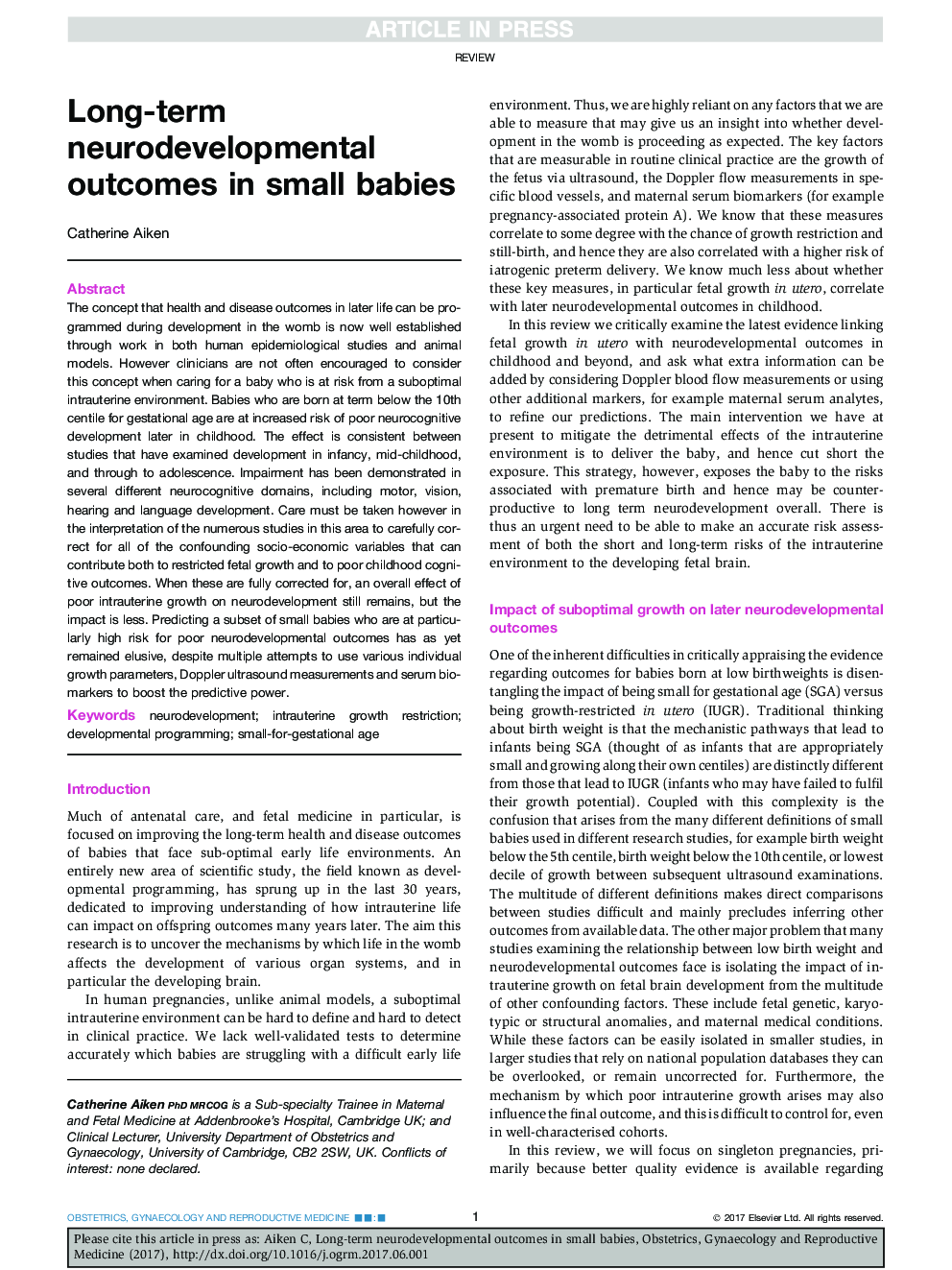| Article ID | Journal | Published Year | Pages | File Type |
|---|---|---|---|---|
| 8783464 | Obstetrics, Gynaecology & Reproductive Medicine | 2017 | 4 Pages |
Abstract
The concept that health and disease outcomes in later life can be programmed during development in the womb is now well established through work in both human epidemiological studies and animal models. However clinicians are not often encouraged to consider this concept when caring for a baby who is at risk from a suboptimal intrauterine environment. Babies who are born at term below the 10th centile for gestational age are at increased risk of poor neurocognitive development later in childhood. The effect is consistent between studies that have examined development in infancy, mid-childhood, and through to adolescence. Impairment has been demonstrated in several different neurocognitive domains, including motor, vision, hearing and language development. Care must be taken however in the interpretation of the numerous studies in this area to carefully correct for all of the confounding socio-economic variables that can contribute both to restricted fetal growth and to poor childhood cognitive outcomes. When these are fully corrected for, an overall effect of poor intrauterine growth on neurodevelopment still remains, but the impact is less. Predicting a subset of small babies who are at particularly high risk for poor neurodevelopmental outcomes has as yet remained elusive, despite multiple attempts to use various individual growth parameters, Doppler ultrasound measurements and serum biomarkers to boost the predictive power.
Keywords
Related Topics
Health Sciences
Medicine and Dentistry
Obstetrics, Gynecology and Women's Health
Authors
Catherine Aiken,
